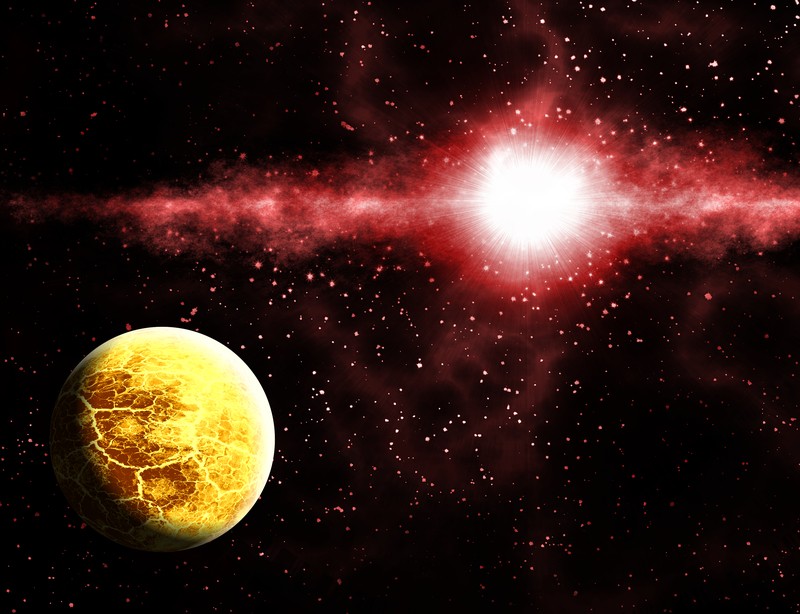what is going on out there?
Things keep getting stranger in the mysterious world of exoplanets. Form kepler-452-b to others that have binary star systems, there is a whole treasure trove of fascinating planets to explore. We have only seen exoplanets in the last decade or so and is very early on in our studying of them. And they just spotted something unusual:
A faraway planet locked in a close dance with its star is making its partner spin faster. The orbital waltz, which mirrors that of Earth and its moon, could be the best laboratory yet for studying how planets affect their stars and vice versa.
Astronomers …spotted the big, gassy world around a star dubbed HATS-18, which is almost identical in size and temperature to our sun. It’s so close to the star that it whizzes round its orbit in less than a day.
Let’s find out more about why this is happening to this fast exoplanet on page 2

There is the red winged planet.1000s of photos coming in now.
It’s just trying to figure out how to come to get ya
You’re ready. Right?
Planet x
There are things scientist jus isn’t gonna be able to explain. Not sayin exoplanet. But just in general.
Planet X nibiru?
tiny letters
Or may be the star spinning so fast is causing extra gravitational pull and drawing the planet closer?
Brooklyn Breezy
Perhaps the smaller planet orbiting is denser? Or would this theoretically cause the star to orbit the planet? I don’t really know enough of this subject or physics in general to do anything other than guess. Maybe the star has some kind of pull we’re unaware of on a planet that’s denser causing the stars increased spin?
Or maybe a black hole is sucking up planets in our universe.. Are time is almost up
Starkiller base
Could be a cataclysmic volcanic event so intense it rocketed too much of its guts to one side the planet making it wobbly
Interesting theory
I can’t see your reply
Bullshit
Could be. At least u understand enough to make this assumption
Stranger?Not really.They are all just part of nature.They all can be explained
I think it’s heavier.. making it come closer..
I guess the same could be said about our own planet….
So is my weather c**k
Old story. Slow exoplanet news week?
Lol. Nothing is spinning. Look for yourself I use binoculars and ya. There’s nothing up there spinning
It’s actually a fairly well understood phenomenon based on the conservation of angular momentum and tidal effects. It’s the same basic concept between the earth and the moon. The gravitational effect on the Earth’s tides from the fact that the Earth is spinning faster than the moon is revolving around it causes a transfer of energy from the earth to the moon and is actually slowing the rotation of the earth as that momentum is added to the moon. The moon is also being pushed away from the earth through the same principle.
This interaction between the star and exoplanet is based on exactly the same principle, but working in reverse. A planet circling a star faster than the star spins will cause the spin to increase while the planet’s orbit loses energy while it moves in closer to the star. Mars and one of its moon is doing the same thing. Eventually the exoplanet and Mars’s moon will crash to the surface of their parent bodies.
I believe it’s possible to go mad contemplating the vastness of the infinite. Was thinking more about this when at some point I started to wonder about direction in space. The possibility of the universe and it’s possible expansion as an aspect to be included. It was such an abstract thought with so many (infinite) variables.
Christina
The wonders of our universe never cease to amaze me. I just wish we had interstellar capability. I would love to be able to explore the wonders and see them with my own eyes, instead reading about it. Well hopefully one day we will be able to traverse space.
Jonathan Connolly
Whenever I click on an article I can’t read it because half of it is cut off and i can’t move the page to be able to read. Unfollowing.
As long as the meat isn’t spinning in an unusual way…
Ryan Castillo
Is there any proof at all of any of this?
SURE
No it is not ! It is spinning as all planets with its makeup and orbit around a star with the same makeup is supposed to orbit ! It’s not unusual at all ! Learn the meaning of words if you wish to write with the intentions of informing !
We have discovered less then 4000 Planets which is less then .000000000000000000000000001 percent of the planets in our galaxy alone therefore you have no idea how planets usually orbit. The fact that this planet was discovered so soon and out of only 3000 planets means it’s most likely very very common.
Fucking stupid$#%&!@*people.